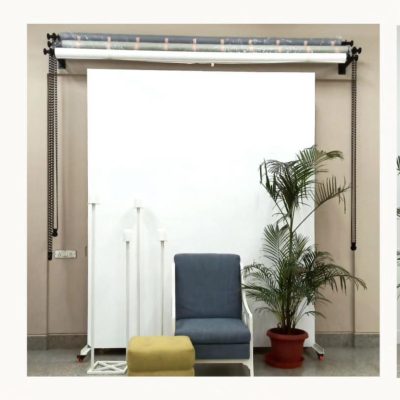At our well-equipped Good Beginnings Design Studio photographers get to play with their photography concepts as a captivating blend of art and technology that helps them express their creativity to tell compelling stories through images. However, in all this, navigating the vast landscape of photography gear can be a daunting task for beginners and seasoned photographers alike. So in this blog, let’s explore the photography gear essential factors to consider while providing insights that will empower photographers to make informed decisions aligned with their unique needs and aspirations.
Understanding Your Purpose:
The first and foremost step in selecting the right and best photography gear is understanding your purpose. Different genres of photography demand distinct equipment. For example; here’s the breakdown specific to the Product Photography Gear:
Camera: A DSLR or mirrorless camera with manual settings and interchangeable lenses.
Lenses: Macro lenses are used for close-up shots and standard prime lenses are used for versatile shots.
Tripod: Sturdy tripod for stable shots
Lighting: Continuous lighting or external flashes for controlling the lighting conditions.
Backgrounds: Seamless backgrounds or sweep paper for a clean and professional look.
Tethering Equipment: Tethering cable and software for connecting your camera to a computer for real-time image preview.
Decoding Camera Types:
The choice between DSLR (Digital Single-Lens Reflex) and mirrorless cameras is a pivotal decision. DSLRs are known to be the best photography equipment because of their optical viewfinders and versatility. On the other hand, mirrorless cameras, compact and lightweight, are gaining popularity for their advanced features and electronic viewfinders. Understanding the strengths and weaknesses of each type will help you choose the camera that suits your preferences and shooting style.
The Role of Lenses:
Lenses are one of the most important camera equipment and play a pivotal role in any type of photography. Understanding the different types of lenses empowers photographers to choose lenses that complement their style and meet the demands of specific genres. For example: In Wedding Photography, a photographer can use
– Fast prime lenses for portraits (e.g., 50mm f/1.8, 85mm f/1.4).
– Standard zoom lens (e.g., 24-70mm f/2.8) for versatility.
-Telephoto lens (e.g., 70-200mm f/2.8) for candid shots from a distance.
Low Light Performance:
Photographers frequently find themselves in low-light conditions, whether capturing sunsets, cityscapes, or indoor events. Assessing a camera’s performance in low-light scenarios, including its ISO capabilities and noise levels at higher ISO settings, is vital for those seeking versatility in their photographic pursuits. This point should mainly be noted while planning studio photography for beginners.
Accessories:
Beyond the camera body and lenses, accessories enhance the overall photography experience. The list of best photography accessories includes a sturdy tripod, external flashes, memory cards, and a well-designed camera bag for starters. But, we need to be more careful in picking our accessories when it’s genre-oriented. For example: the travel photography gear essentials should include accessories like a polarizing filter for enhancing colors, an ND filter for long-exposure shots, and a rain cover for protection in unpredictable weather.
Brand Ecosystem:
Choosing a camera brand involves more than selecting a piece of equipment and photography gear essentials; it’s about entering an ecosystem. Assessing the available best photography accessories, lenses, and community support for a particular brand aids in building a cohesive and compatible gear setup.
Budgetary Considerations:
Photography gear spans a wide spectrum of prices, from budget-friendly options to high-end photography studio equipment. Establishing a realistic budget is crucial. While it may be tempting to invest in the latest and most expensive equipment, it’s essential to find a balance that aligns with your financial constraints.
In conclusion, choosing the best photography gear is a multifaceted process that requires careful consideration of individual needs, preferences, and aspirations. By defining your purpose, setting a budget, understanding camera types and features, and considering the specifics of each genre, you can navigate the complex world of essential photography gear with confidence. Ultimately, the gear you choose should be a tool that empowers your creativity, allowing you to capture moments and tell stories in a way that resonates with your unique vision.

